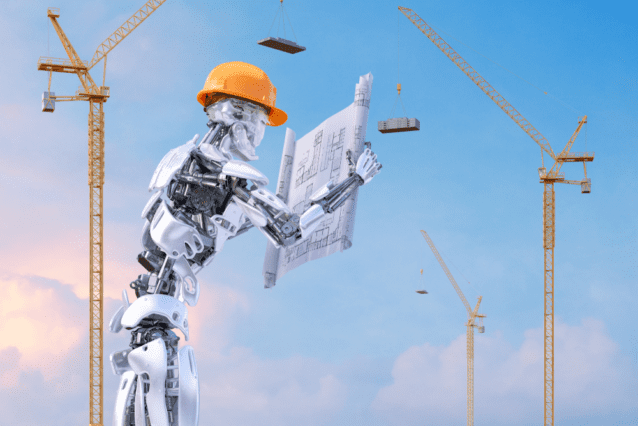
Artificial intelligence (AI) is leaving its mark on various industries, and the construction sector is experiencing first-hand the transformative power of AI.
While engineers have always embraced digital tools and processes, recent AI-related investments have propelled its adoption, evolving it at an unprecedented scale and speed.
It has the potential to address persistent issues in the industry, such as project delays, budget overruns, and environmentally-intensive structures, which could significantly transform the built environment industry – as long as we learn how to work with it.
What is AI? And how can it be used for construction?
AI comprises machines simulating human intelligence processes like learning, reasoning, and problem-solving. Where the construction industry is concerned, technologies like machine learning and natural language processing leverage data to generate algorithms for specific tasks. This helps to refine building designs, creating leaner, greener structures with minimal material usage – carrying both financial and environmental benefits.
The benefits of AI in construction
AI-powered project planning and scheduling are invaluable for large construction projects, where accurate planning is crucial. It can analyse vast datasets to identify the most efficient ways to plan and schedule, saving time and money, whilst reducing the risk of delays. Generative design, enabled by AI, leverages databases of past building plans to develop design alternatives quickly, meeting various parameters and constraints – be it weather conditions, material availability, or labour availability.
AI-based solutions improve construction execution by enhancing planning, updating construction sequences, task management, and overall productivity. It detects potential issues, clashes, and deviations by comparing the digital twin of the building in Building Information Modelling (BIM) against the actual physical structure. Drones and robots aid in capturing images and measurements, enabling AI to monitor progress, identify errors, and trigger automatic adjustments to construction schedules. This facilitates just-in-time delivery of construction supplies and therefore optimising construction site logistics.
Construction projects aren’t always smooth running, entailing various risks, from quality to safety, time, and cost. AI utilises real-time monitoring to analyse historical project data to anticipate potential risks, ranging from design flaws to safety hazards and budget overruns. These identified risks are then scored based on various parameters, allowing construction managers to focus their resources on addressing the most critical concerns – meaning that no time or effort is wasted.
The challenges of AI in construction
Although the incorporation of AI carries significant benefits, as with any technology, it does come with its challenges.
The construction industry deals with a substantial amount of data, including architectural plans, financial records, project timelines, and even personal information of workers. When AI is integrated into these processes, data privacy becomes a big concern. Construction companies must ensure that sensitive data is handled securely, with robust encryption and access controls. This includes safeguarding against potential data breaches that could compromise not only financial information but also intellectual property, designs, and even worker safety records.
It’s equally important to strike the right balance between human expertise and AI-driven decision-making. AI can provide valuable insights and automation, but it should compliment and empower human professionals rather than replace them.
Embracing AI in the construction industry holds the promise of a transformative future, where technology contributes to enhanced sustainability, efficiency, and ethical practices. This vision includes:
AI’s integration into the construction industry presents huge opportunities to enhance efficiency, cut costs, and minimise our environmental impact – which are benefits that everyone should consider embracing. As these systems continue to evolve, it’s essential that we also evolve our understanding of how to utilise these tools effectively, all while ensuring safety and ethical usage.
As a business dedicated to providing exceptional engineering design and planning services, our success comes from our ongoing investment in technology and our use of the latest digital design tools. With that in mind, we’re excited to see how AI’s role in construction develops.